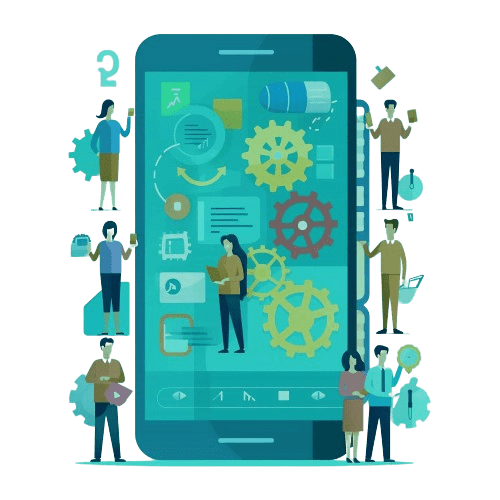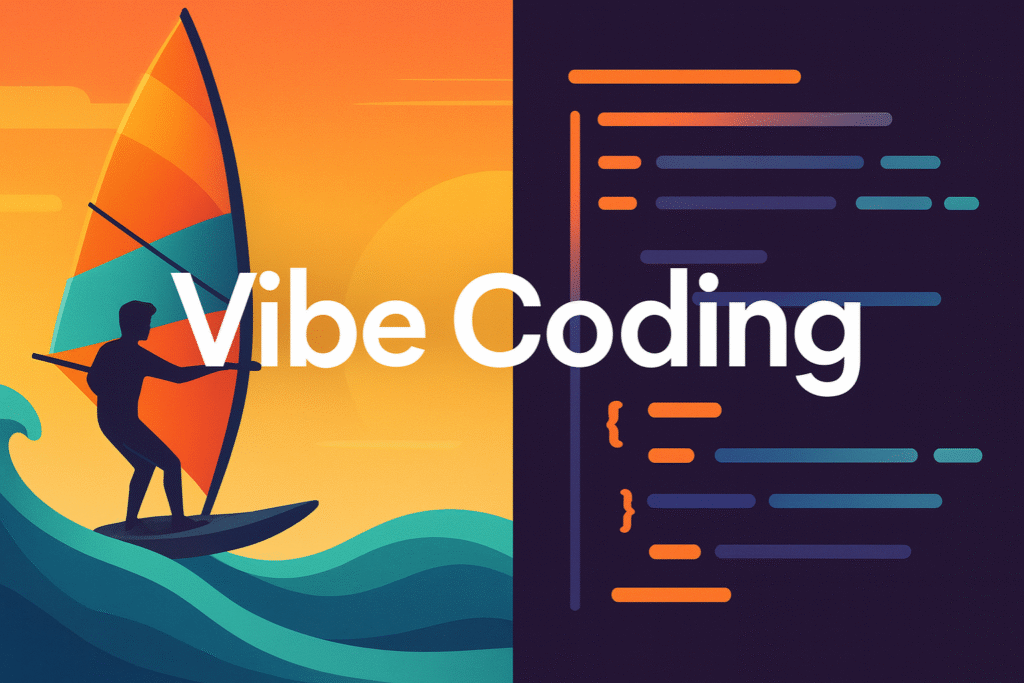You have an app idea, you have mastered the basic tools and you want to turn it into a business. But it's hard to handle all the demands on your own.
The solution? Set up a scalable apps no-code development agency (a lean business model) with high demand in the market.
In this article, we will answer:
- What is a apps no-code agency?
- How to assemble one from scratch?
- What does it take to be successful and attract customers?
Read on and find out how to turn your no-code tooling experience into a profitable business.
Table of Contents
What does a apps no-code development agency do?
To begin with, let's clarify what a apps agency does in the code. Basically, it is a company that offers application creation services, using tools that do not require programming knowledge.
These tools allow anyone to build custom, interactive, and functional appss without having to write a line of code.

Thus, a apps no code agency can serve different types of clients who need quick, cheap and efficient solutions to your problems. See some examples of clients and services that can be offered:
- A doctor who wants to create an app for teleconsultation;
- A businessman who needs a sales management app integrated with WhatsApp;
- A condominium manager who wants to automate condominium communication;
- A company looking for a solution for managing collaborative projects;
- A school that needs an app for online education.
This type of agency can stand out in the market and make money with this service you know how to offer value to your customers.
It is important to understand their needs, goals and expectations, and deliver solutions that satisfy and surprise them.
What are the requirements for setting up a apps no-code agency?
Now that you've managed to understand what a apps no code company does in practice, we'll explain what it needs to be a great success and stand out in the market.
Let's go!
Online presence
These days, it is possible for a company to be very successful even if it operates completely remotely.
This option is very advantageous when taking into account rental costs, taxes and other expenses that can be saved.
In this case – just as in the past there was a concern about the location of a business – the ideal is to invest in an internet presence, so that your agency can be discovered by online users.
The tip is to understand where your audience is, but also vary this positioning, betting on social networks, but also on a website that can be found by Google.
Market
The development market of apps is dynamic, competitive and constantly growing. It is essential that you know your target audience, your needs, desires and expectations.
We also recommend, first of all, analyze the competition, suppliers, partners and industry trends. Defining your positioning, differentiator and value proposition is the first step in creating your agency.
Legal requirements
One step that should certainly not be overlooked is legal requirements. Any company must comply with the legal requirements for its incorporation, operation and functioning.
To do this, the name, CNPJ, articles of association and operating license must be registered.
Furthermore, the entrepreneur must:
- Pay taxes, fees and contributions due;
- Follow labor, environmental, consumer and intellectual property laws.
Physical structure
If you choose to have a physical space for your company, you must consider that this location needs to be suitable for the size, field of activity and business model.
Remember that this space needs to accommodate equipment, furniture, materials and employees. Other important points that need to be provided are:
- Good electrical network;
- Fast and stable internet;
- Security system;
- Space for team socialization.
Prepared team
The team of a apps development company must be prepared, qualified and specialized in no code. It may seem basic, but we want to make it clear that it is an essential point for the success of your company.
You need to have professionals who master the no-code tools that the company uses, who have knowledge of design, validation, publication and maintenance of apps.
Additionally, it is important to look for creative, innovative, proactive and collaborative people. Later on, we will explain how to train your team and achieve the long-awaited dream team.
Organization of the production process
This is a point where many companies fail, as they do not pay due attention to production processes. Organizing the steps, especially when we talk about developing apps in code, is a priority.
The production process must be efficient, effective and effective. To do this, you must define:
- Phases;
- Activities;
- Responsibilities;
- Deadlines;
- Costs;
- Indicators of your process.
There are several methodologies, tools and techniques that can optimize your process and guarantee the quality of your apps.
Investment and working capital
A company's investment and working capital are the financial resources needed for its implementation, operation and growth.
That is, it is the value that the company needs to acquire its fixed assets, such as equipment, furniture, materials and physical space.
This value also includes the payment of salaries, taxes, suppliers and customers. It is important to calculate your investment and working capital, and look for sources of financing that can make the business viable before going into practice.
Automation
We are talking about a apps company in the code and of course, we could not leave automation aside. But what does it mean?
Automation is the application of technologies that can replace or assist human activities, increasing the company's productivity, quality and competitiveness.
It is possible to use no code to carry out these automations, including. You can automate internal and external processes, such as:
- Financial management;
- Project management;
- Client management;
- Team management;
- Integration with other platforms;
- Publication in apps stores;
- Update of the apps.
Technical standards
Technical standards are the standards that regulate best practices in the sector, aiming for safety, quality and compliance of the apps. The company must follow national and international technical standards, such as:
- ISO;
- ABNT;
- IEEE;
- W3C.
Furthermore, it is important to be aware of and follow the specific technical standards of each platform, such as Apple, Google, Microsoft and Amazon.
Production process
The production process of a apps development company is the set of steps that transform an idea into an app.
It may vary depending on the methodology, tool and platform used by the company, but generally involves the following phases:
- Ideation: phase in which the company defines the concept, objective, target audience and features of the app;
- Prototyping: stage in which the company creates a visual and interactive model of the app, using the tools in the code;
- Validation: step in which the agency tests the app prototype with potential users, collecting feedbacks and suggestions for improvement;
- Publication: time to make the app available in app stores, following the technical standards of each platform;
- Maintenance: phase of monitoring the app's performance, security and satisfaction, fixing bugs, implementing updates and offering support to users.
Disclosure
If you want to start a business, you need to understand that marketing and communication are essential parts. It is essential to promote the company as a way of promoting services, aiming to attract, win over and retain customers.
To do this, you can use communication channels such as:
- Social networks;
- Blogs;
- Podcasts;
- Webinars;
- Events;
- Adverts.
How to prepare a team to work in a apps development company?
To deliver apps with quality, your team needs to master the main no-code tools on the market. Invest in practical training focused on tools such as:
- Bubble: creation of apps web complexes
- FlutterFlow: Ideal for apps mobile devices on iOS and Android
- WebWeb, Xano, Framer and other complementary solutions
In addition to technical knowledge, encourage an environment of experimentation and continuous feedback. This ensures innovation and accelerates the development of original solutions.
What are the advantages of opening a apps development agency?
Opening a apps development company can bring many advantages to anyone who wants to undertake a business in the technology sector. Some of these advantages are:
Lower investment capital
An app development agency does not require significant initial capital to start operations. With less than R$ 5 thousand you can start with tools like Xano and Bubble.
Furthermore, the no-code tools allow the company create apps without needing to hire programmers, which reduces labor costs.
Shortest turnaround time
Application development companies can obtain a faster return on investment. This is due to the shorter time required to develop, validate, and publish applications compared to other types of software. Many founders report MVP validation in as little as 30 days.
Additionally, the company can implement recurring revenue models such as payments and subscriptions, commissions or advertisements, generating a constant source of income.
Shorter production time
For these organizations, it is also possible deliver projects in shorter deadlines compared to other software companies.
Using no-code tools allows you to create applications quickly, easily and intuitively, without the need for extensive coding. Adopting agile methodologies also favors continuous delivery and agile adaptation to changes.
- No-code: drag-and-drop, zero code; faster delivery, lower initial cost, but limits on customization and performance.
- Low-code: mixes visual blocks + code snippets; balances speed and flexibility, ideal for 80 % of corporate cases.
- High-code: 100 % manual development; requires more time and staff, but offers absolute control over functionality, UX and infrastructure.
| Approach | Average speed1 | Typical team | Flexibility / Customization | When it's worth it |
|---|---|---|---|---|
| No-code | Hours → days for MVP | 1-2 makers (business + design) | Low-medium – ready-made components; limitation on advanced logic | Quick POCs, landing pages, simple automations, startups early-stage |
| Low-code | Weeks | 2-5 devs + analyst | Medium-high – allows for one-off code for integrations or complex logic | Corporate apps, system integrations, custom back-offices |
| High-code (traditional code) | Months | 5-10+ devs, QA, DevOps | Total – stack control, performance and security | Core business products, high complexity, extreme scalability |
1 Estimates considering typical web/mobile application scope.
Expanding market
Application development agencies have the opportunity to capitalize on a growing market, due to the continuous increase in demand for applications, both from consumers and companies. According to Gartner, the platform market no-code grows 23% per year.
Furthermore, the company can serve various segments, such as health, education, entertainment and commerce, and develop innovative and personalized solutions for its customers.
Start programming now with no-code
Interested in learning no-code to finally give the start in your company? You can start now with No-code Start-up!
Take code training and earn by developing apps. With the FlutterFlow course, for example, you learn how to create applications for iOS and Android without the need to use code.
What are you waiting for? Start your no-code journey and surf this revolution with us!
























